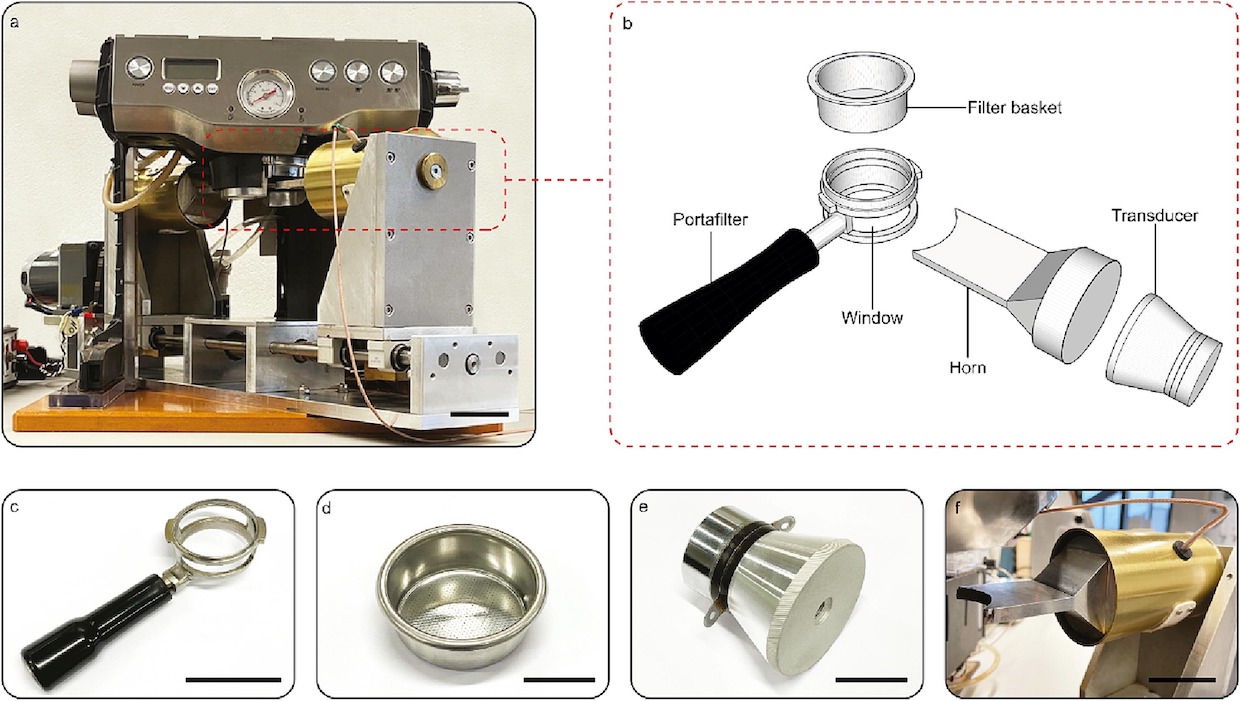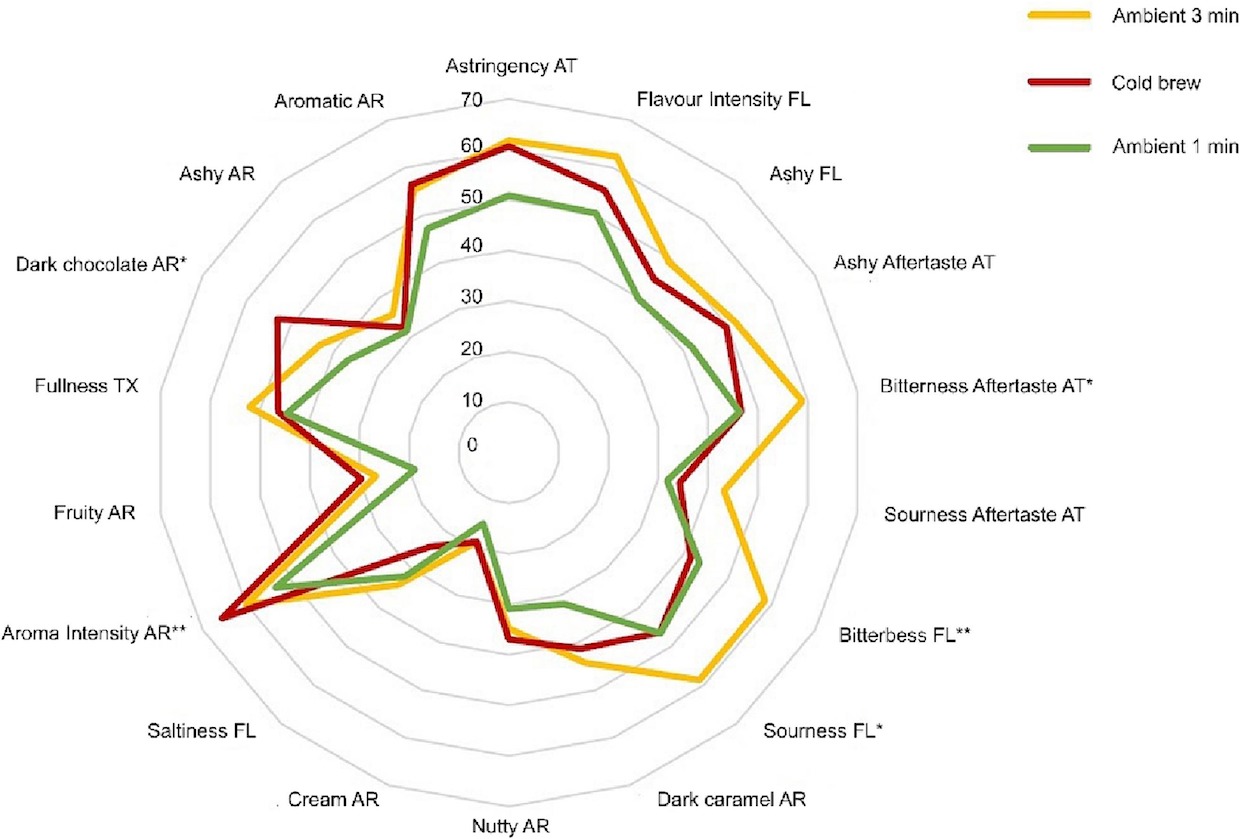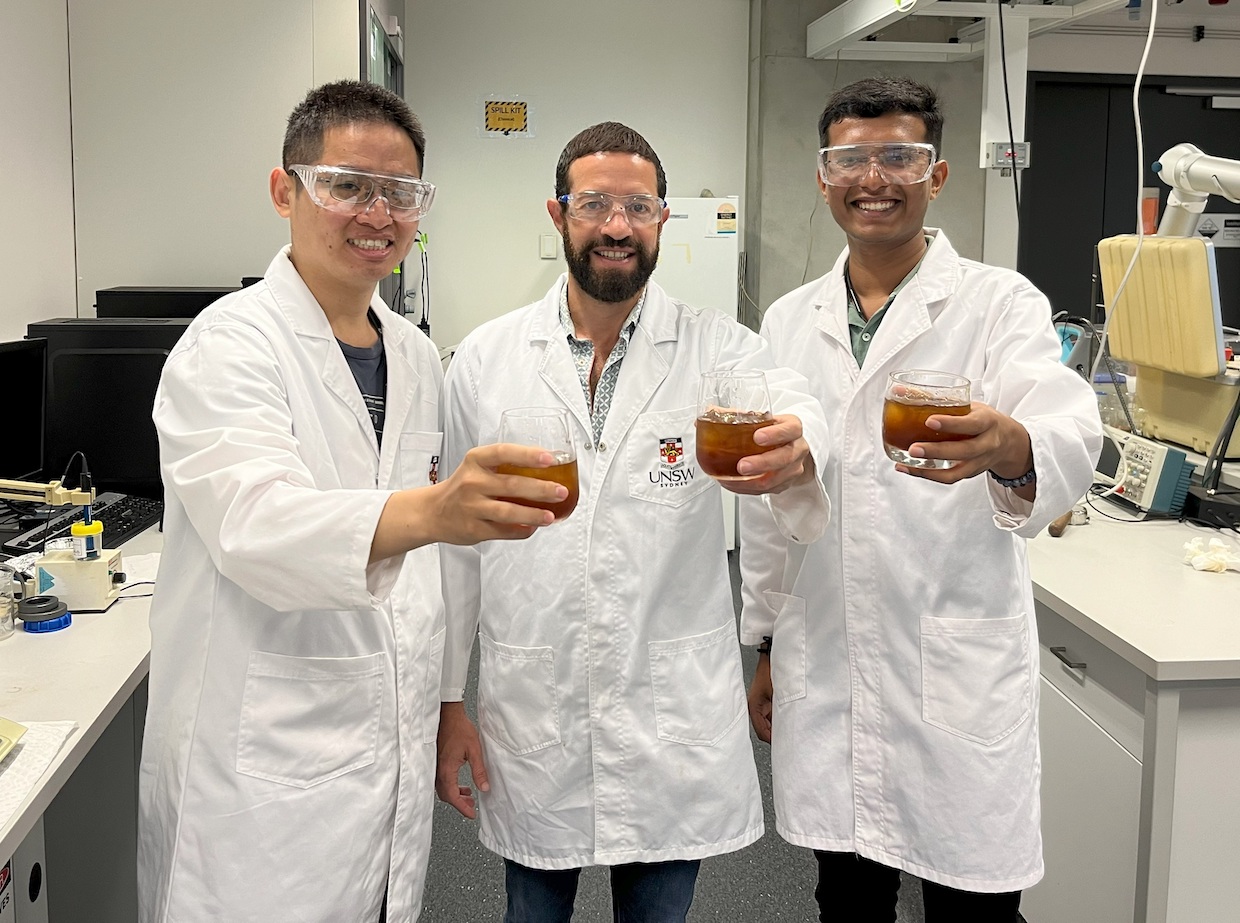
The customized ultrasonic coffee brewing machine. a) Photograph of the machine. b) Schematic of the parts for the ultrasound transmission into the coffee basket. c-f), Photographs of the portafilter (with corresponding window), filter basket, transducer, and the horn, respectively. (scale bar: 4 cm). Image shared through a Creative Commons CC-BY license.
Researchers in Australia have successfully converted a home espresso machine into a sonic reactor that they say can produce desirable cold brew in mere minutes, as opposed to a period of hours or days.
The research team at the UNSW Sydney suggested that the breakthrough could transform cold brewing in industry applications, with individual espresso-forced brews potentially replacing individual home cold brewers or larger commercial cold brew systems.
The research challenges a segment of the coffee equipment industry that evolved rapidly over the past decade along with the popularity of cold brew beverages.
The new study, appearing in the June edition of the Elsevier publication Science Direct, is not the first to prove that sonic reaction can hasten the extraction of coffee brews. However, the researchers suggested previous work has not sufficiently explored how such processes might be employed in working coffee equipment.
“We’re able to demonstrate that this can be adapted to [an] existing espresso machine,” Francisco Trujillo, a native of Colombia who co-authored the study, said. “We are very excited about developing this technology that can be used by companies that already manufacture coffee machines, so consumers can enjoy an ultrasonic cold brew at home in less than three minutes.”
[Note: Trujillo and another corresponding author, Kourosh Kalantar-Zadeh, declared a pending Australian patent application related to this project.]
For the study, the researchers deconstructed and retrofitted a Breville BES920 dual-boiler espresso machine, adding an integrated circuit that allowed them to brew at ambient water temperatures and manipulate other variables such as flow and time. Meanwhile, the machine’s filter basket was surrounded by a bolt-clamped transducer and a metallic horn, creating an ultrasonic reactor.
Sound waves injected at multiple points through the brew basket walls were found to dramatically hasten extraction by a phenomenon known in the field of sonochemistry as liquid cavitation.
“When acoustic bubbles collapse near the grounded coffee, they generate micro-jets with enough force to pit and fracture the coffee grounds — intensifying the extraction of the aroma and flavors of the brew,” Trujillo said.
Similar principles have indeed put into practice by some upstart manufacturers in recent years, including a brand called Osma that introduced a quick cold brewer, and a Korean brand called Sonic Dutch. DCN’s first recorded mention of “sonication-assisted extraction” came in 2015 through a Los Angeles brand called Elixir.
After experimenting with different brew recipes, the UNSW research team submitted three samples for sensory analysis to a team at the University of Queensland: a 1-minute sonicated cold brew; a 3-minute sonicated cold brew; and a 24-hour non-sonicated cold brew. The brews were evaluated for aroma, texture, flavor, and aftertaste attributes.

Fig. 6. Cobweb plot for all attributes (n = 3 samples × 4 replicates × 11 panellists) including whether they were significant among the three samples (Significant difference between samples indicated by * (p < 0.05), ** (p < 0.01), *** (p < 0.001), scale 0–100). Image shared through a Creative Commons CC-BY license.
“Compared to the 24-hour brew, the sonicated 1-minute brew sample received similar ratings, especially in flavor, aftertaste attributes including bitterness, sourness, fullness texture and aroma,” said Trujillo. “However, it scored lower in aroma intensity and dark chocolate aroma. This suggests that the sonicated 1-minute sample is slightly under-extracted compared to the 24-hour cold brew.”
The researchers said the sonicated 3-minute brew provided a “similar dark chocolate aroma and aroma intensity” to the 24-hour brew, but had slightly more bitterness.
“Very importantly, this breakthrough opens the door for coffee shops and restaurants to produce on-demand brews comparable to 24-hour cold brews, supplying the rising demand while eliminating the need for large semi-industrial brewing units and the associated requirement for extensive refrigeration space.”
Read the full study here.
Comments? Questions? News to share? Contact DCN’s editors here.
Related Posts
Nick Brown
Nick Brown is the editor of Daily Coffee News by Roast Magazine.







Comment